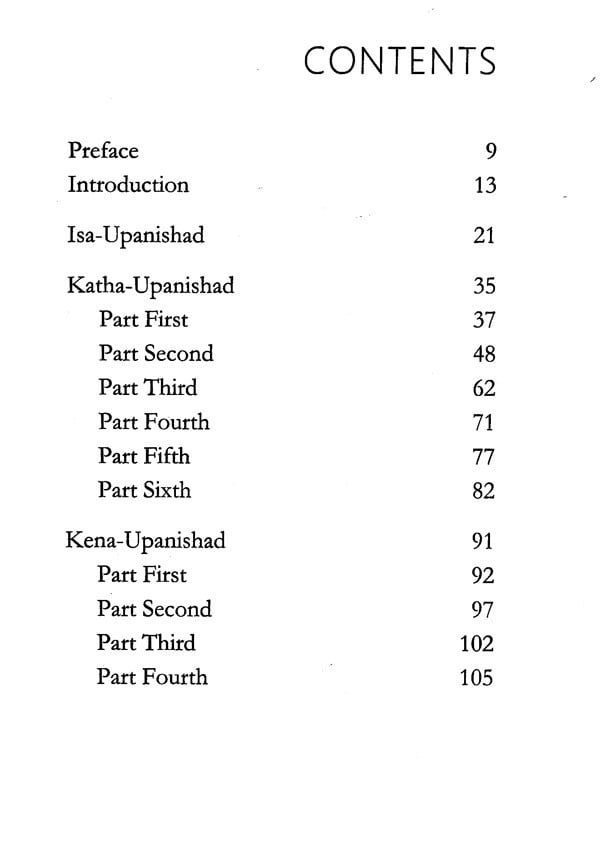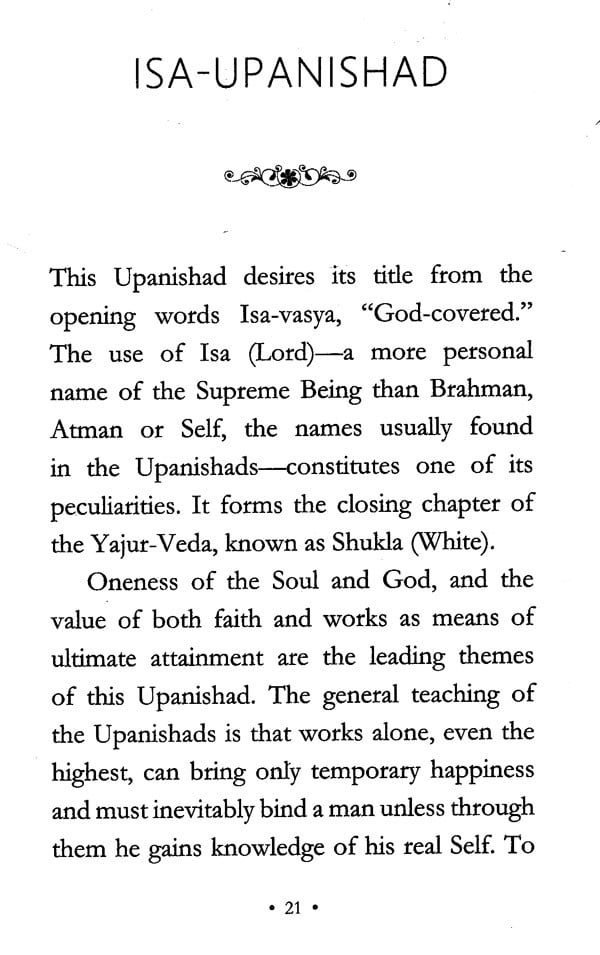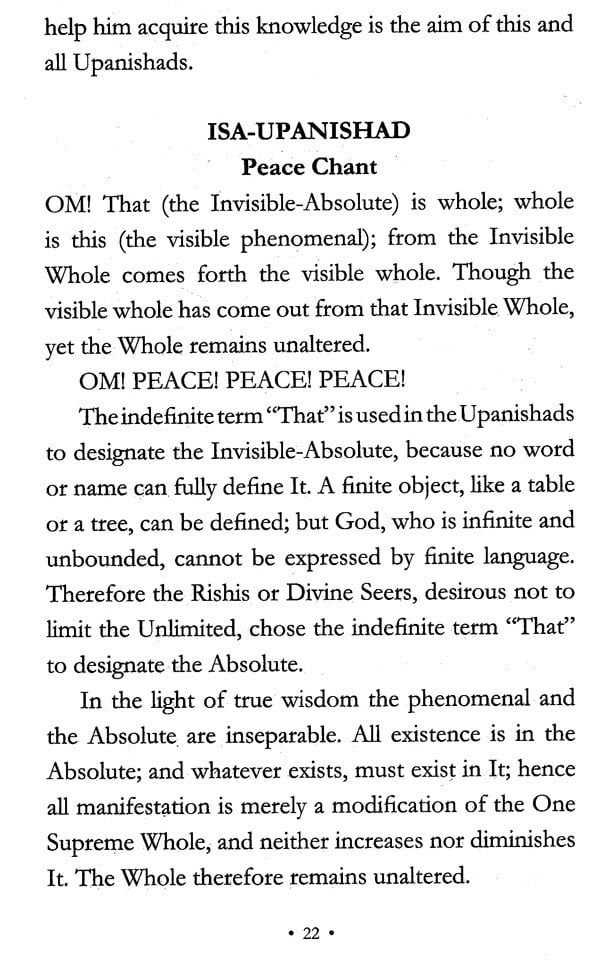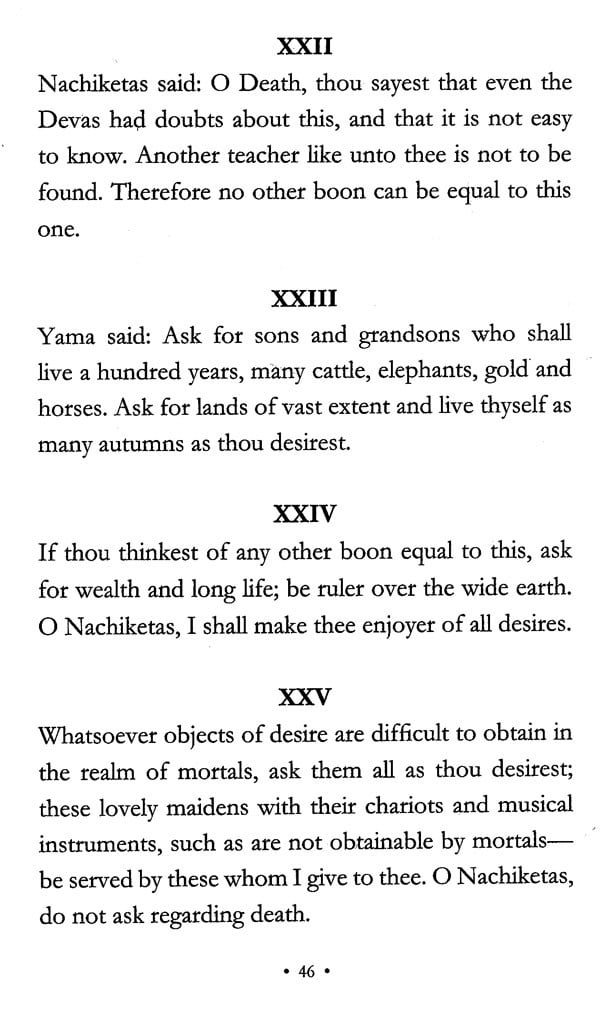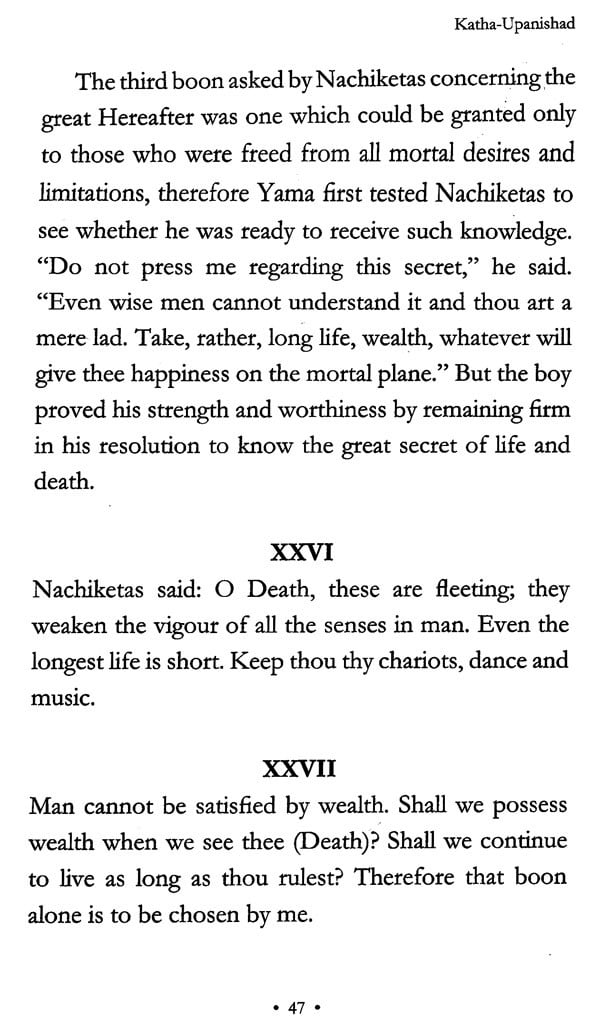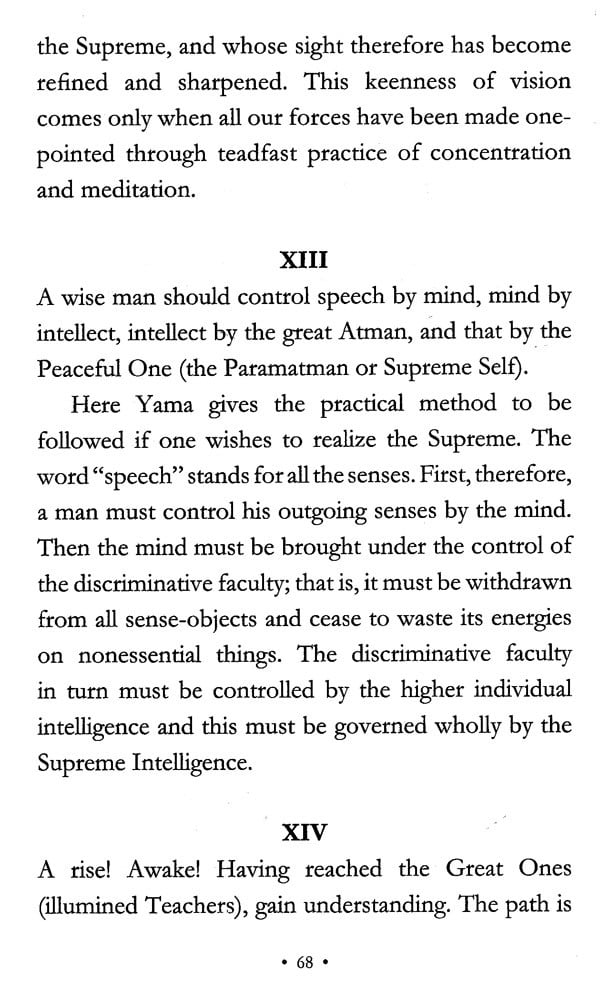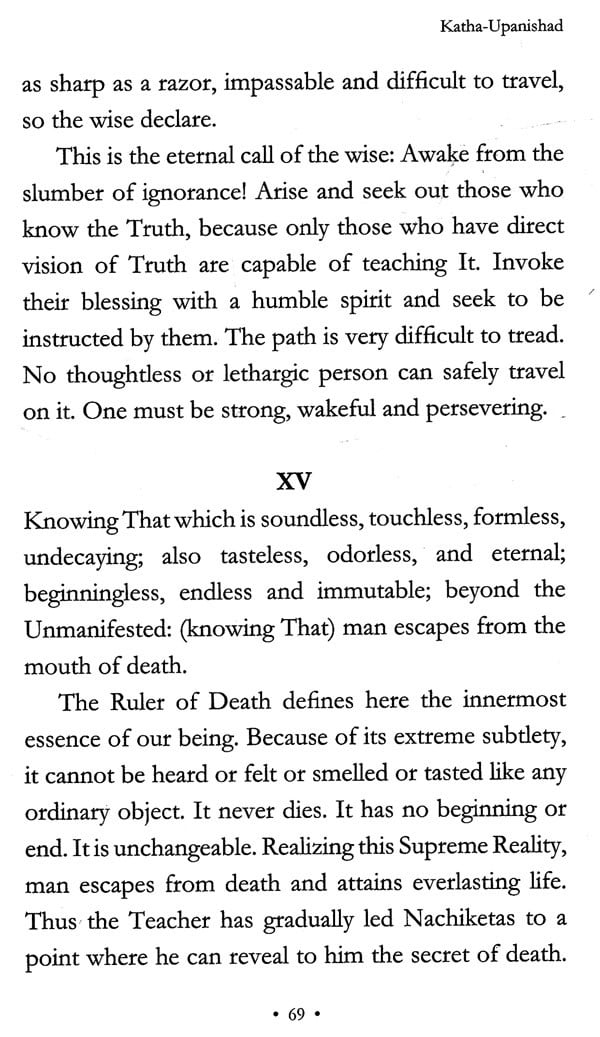
The Upanishads- Translated and Commentated by Swami Paramananda From The Original Sanskrit Text
Book Specification
| Item Code: | NBZ474 |
| Author: | Swami Paramananda |
| Language: | English |
| Edition: | 2020 |
| ISBN: | 9788175994492 |
| Pages: | 111 |
| Cover: | PAPERBACK |
| Other Details | 8.00 X 5.00 inch |
| Weight | 90 gm |
Book Description
The Upanishads, originally written during 5th century BC and first translated into English in early 19th century, are early philosophical texts of the Hindu religion and contain within them the tenets upon which the central philosophical concepts of the religion are based.
A doctrine on Hindu thought and culture and perhaps the most important literature from ancient India, The Upanishads expound on principles like samsara, brahman, atman, karma, dharma and moksha and form the core of Indian philosophy. Along with the Bhagavad Gita and the Brahmasutra, the Upanishads provide a foundation for the several later schools of Vedanta.
This version is an English translation by Swami Paramananda as part of his mission to spread the eastern teachings of Hinduism to the Western world. Paramananda was a swami and one of the early Indian teachers who went to the United States to spread the Vedanta philosophy and religion. He was a mystic, a poet and an innovator in spiritual community living. Using his experience as a religious scholar, Paramananda sensitively and successfully translated the wisdom into the foremost of Western languages.
Easy to understand and simply written, the thought behind this text is to know your SELF and follow the wisdom within the text to lead a wholesome and spiritually centered life.
The translator's idea of rendering the Upanishads into clear simple English, accessible to Occidental readers, had its origin in a visit paid to a Boston friend in 1909. The gentleman, then battling with a fatal malady, took from his library shelf a translation of the Upanishads and, opening it, expressed deep regret that the obscure and unfamiliar form shut from him what he felt to be profound and vital teaching.
The desire to unlock the closed doors of this ancient treasure house, awakened at that time, led to a series of classes on the Upanishads at The Vedanta Centre of Boston during its early days in St. Botolph Street. The translation and commentary then given were transcribed and, after studious revision, were published in the Centre's monthly magazine, "The Message of the East," in 1913 and 1914. Still further revision has brought it to its present form.
So far as was consistent with a faithful rendering of the Sanskrit text, the Swami throughout his translation has sought to eliminate all that might seem obscure and confusing to the modern mind. While retaining in remarkable measure the rhythm and archaic force of the lines, he has tried not to sacrifice directness and simplicity of style. Where he has been obliged to use the Sanskrit term for lack of an exact English equivalent, he has invariably interpreted it by a familiar English word in brackets; and everything has been done to remove the sense of strangeness in order that the Occidental reader may not feel himself an alien in the new regions of thought opened to him.
Even more has the Swami striven to keep the letter subordinate to the spirit. Any Scripture is only secondarily an historical document. To treat it as an object of mere intellectual curiosity is to cheat the world of its deeper message. If mankind is to derive the highest benefit from a study of it, its appeal must be primarily to the spiritual consciousness; and one of the salient merits of the present translation lies in this, that the translator approaches his task not only with the grave concern of the careful scholar, but also with the profound reverence and fervor of the true devotee.
The Upanishads represent the loftiest heights of ancient Indo-Aryan thought and culture. They form the wisdom portion or Gnana-Kanda of the Vedas, as contrasted with the Karma-Kanda or sacrificial portion. In each of the four great Vedas-known as Rik, Yajur, Sama and Atharva-there is a large portion which deals predominantly with rituals and ceremonials, and which has for its aim to show man how by the path of right action he may prepare himself for higher attainment. Following this in each Veda is another portion called the Upanishad, which deals wholly with the essentials of philosophic discrimination and ultimate spiritual vision. For this reason the Upanishads are known as the Vedanta, that is, the end or final goal of wisdom (Veda, wisdom; anta, end).
The name Upanishad has been variously interpreted. Many claim that it is a compound Sanskrit word Upa-ni-shad, signifying "sitting at the feet or in the presence of a teacher"; while according to other authorities it means "to shatter" or "to destroy" the fetters of ignorance. Whatever may have been the technical reason for selecting this name, it was chosen undoubtedly to give a picture of aspiring seekers "approaching" some wise Seer in the seclusion of an Himalayan forest, in order to learn of him the profoundest truths regarding the cosmic universe and God. Because these teachings were usually given in the stillness of some distant retreat, where the noises of the world could not disturb the tranquillity of the contemplative life, they are known also as Aranyakas, Forest Books. Another reason for this name may be found in the fact that they were intended especially for the Vanaprasthas (those who, having fulfilled all their duties in the world, had retired to the forest to devote themselves to spiritual study).
The form which the teaching naturally assumed was that of dialogue, a form later adopted by Plato and other Greek philosophers. As nothing was written and all instruction was transmitted Orally, the Upanishads are called Srutis, "what is heard." The term was also used in the sense of revealed, the Upanishads being regarded as direct revelations of God; while the Smritis, minor Scriptures "recorded through memory," were traditional works of purely human origin. It is a significant fact that nowhere in the Upanishads is mention made of any author or recorder.
No date for the origin of the Upanishads can be fixed, because the written text does not limit their antiquity. The word Sruti makes that clear to us. The teaching probably existed ages before it was set down in any written form. The text itself bears evidence of this, because not infrequently in a dialogue between teacher and disciple the teacher quotes from earlier Scriptures now unknown to us. As Professor Max Muller states in his lectures on the Vedanta Philosophy: "One feels certain that behind all these lightning-flashes of religious and philosophic thought there is a distant past, a dark background of which we shall never know the beginning." Some scholars place the Vedic period as far back as 4000 or 5000 B.C.; others from 2000 to 1400 B.C. But even the most conservative admit that it antedates, by several centuries at least, the Buddhistic period which begins in the sixth century B.C.
**Contents and Sample Pages**
